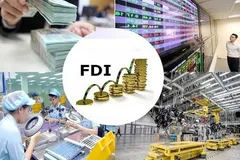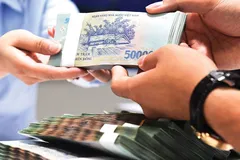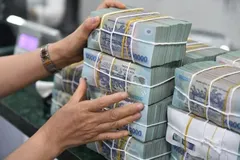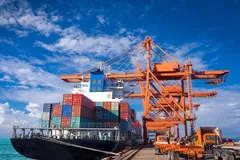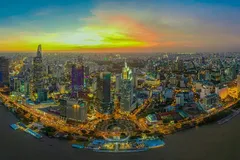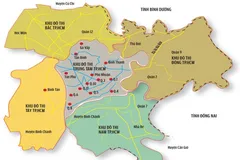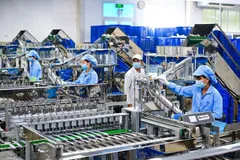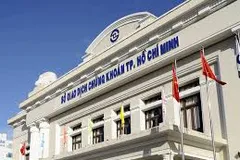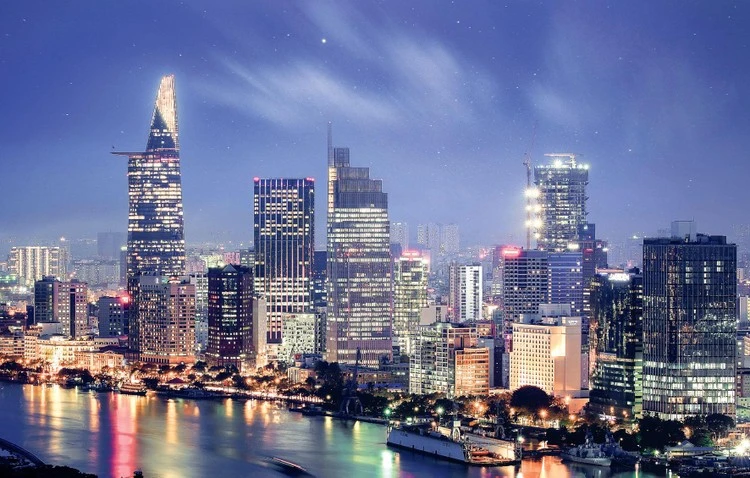
These strategic orientations have been extremely significant, and after 50 years of national reunification, Ho Chi Minh City has emerged as a dynamic and creative city.
50 Years of Continuous Efforts
Looking back at history, in the early stages, after the Liberation up to 1985, Ho Chi Minh City and the whole country entered the process of building socialism, amidst difficulties caused by the aftermath of 30 years of war, as well as two border wars, all while the economy operated under a centralized planning mechanism. During this period, the city's total product (GRDP) grew at an average rate of only 2.7% per year.
However, the Doi Moi (Renovation) process, which started strongly in 1986, marked a turning point, especially in the economic sector. This transformation began with the construction of a multi-sector commodity economy, replacing the centrally planned economy, and adopting a socialist-oriented market mechanism (in 2001), profoundly changing the economic landscape of Ho Chi Minh City. Resolution No. 01 and Resolution No. 20 set out the vision for Ho Chi Minh City to gradually become an industrial, service, and science and technology hub in the Southeast Asian region, contributing increasingly to the Southern region and the entire country.
In 2002, Resolution No. 16 further upgraded the city to a “special urban area,” tasked with leading industrialization and modernization, acting as a “locomotive,” a driving force for the Southern Key Economic Zone, and gradually becoming a major center for economics, finance, trade, science, and technology in the country and the Southeast Asian region.
Resolution No. 31 has reinforced Ho Chi Minh City’s position, reaffirming its role as a major economic center of the entire country, while pushing towards becoming an economic, financial, and service center for Southeast Asia and Asia, with global competitiveness.
From 1986 to 1990, the city’s GRDP grew at an average rate of 7.82% per year (calculated at 1994 prices). From 1991 to 1995, the growth rate jumped to 12.62% annually, marking the period when Ho Chi Minh City emerged as the economic engine of the entire country. From 1996 to 2010, the city continued to accelerate its industrialization and modernization. During this period, Ho Chi Minh City’s GRDP increased at a double-digit rate: 10.1% from 1996 to 2000, 11% from 2001 to 2005, and 11.2% from 2006 to 2010. Per capita income rose dramatically from $700 in 1996 to about $5,000 per person per year by 2010.
From 2011 to 2020, Ho Chi Minh City focused on in-depth economic development, achieving an average GRDP growth rate of 6.86% annually, which was higher than the national growth rate of 5.96% and the Southern Key Economic Zone's growth rate of 6.31%. The city’s GRDP in 2020 accounted for 25.79% of the country’s total, and 51.11% of the Southern Key Economic Zone.
From 2021 to the present, the COVID-19 pandemic has impacted the city’s economy. However, Ho Chi Minh City recorded the highest growth rate of 9.03% in 2022, following a low base in 2021, when the economy shrank by 6.78% due to the pandemic.
Transforming, Integrating, and Developing
Ho Chi Minh City has also continuously innovated to integrate and is currently among the leading cities in the country for digital transformation, ranking 111th among 1,000 cities with dynamic, creative startup ecosystems worldwide. The city was a pioneer in Vietnam’s internet revolution, being the first to connect to the internet in 1997. Ho Chi Minh City led the charge in applying information technology (IT) to administrative reform, socio-economic development, and modern urban governance. In 2002, the City People's Committee issued a decision to implement a Target Program for IT development during 2002-2005, prioritizing investment in key areas to boost productivity, management efficiency, and competitiveness, thus shaping a model for modern urban governance.
Between 2017 and 2020, Ho Chi Minh City began working on a project to transform itself into a smart city, with a vision for 2025, focused on utilizing big data, connecting operation centers, and improving urban management on modern technological platforms.
From 2020, the city entered a phase of acceleration, launching a Digital Transformation Program for the 2020-2030 period. Alongside this, the city started the Research, Development, and Application Program for Artificial Intelligence (AI), aiming to become the region's leading center for innovation and digital technology applications, with technology serving as the foundation for developing the digital economy and enhancing the quality of life for its citizens.
By 2024, Ho Chi Minh City is set to become the first locality in the country to issue a City-level Digital Transformation Program. It is expected to rank second nationwide in digital transformation, demonstrating the city's leadership in adapting to the digital age.
By 2025, the city aims to increase the proportion of its digital economy to 25% of GRDP, signaling its commitment to transforming the growth model, fostering innovation, and ensuring sustainable development.
As the economic locomotive, Ho Chi Minh City continues to demonstrate its readiness to generate growth momentum. The city has set a target of double-digit growth in 2025 and throughout the 2026-2030 period. In 2025, the city aims for a GRDP growth of over 10% compared to 2024.






